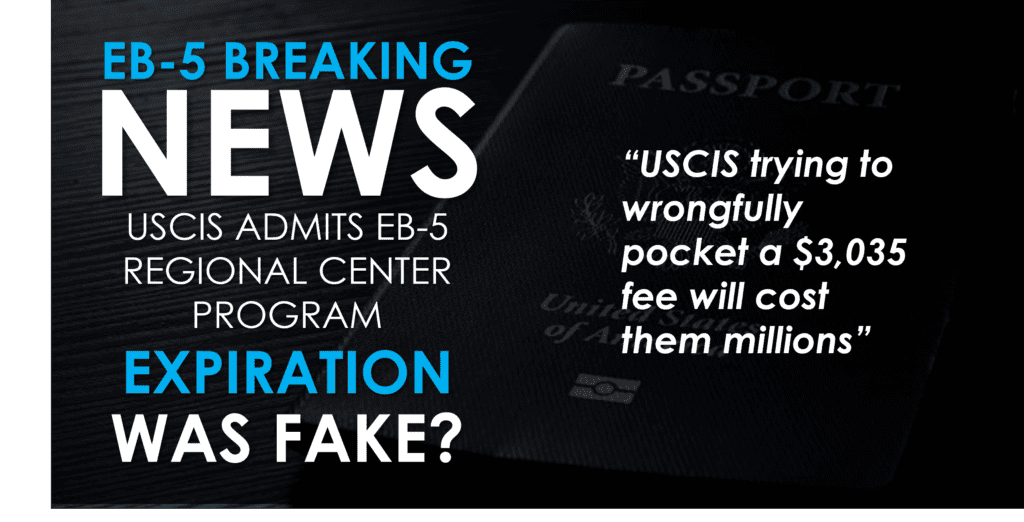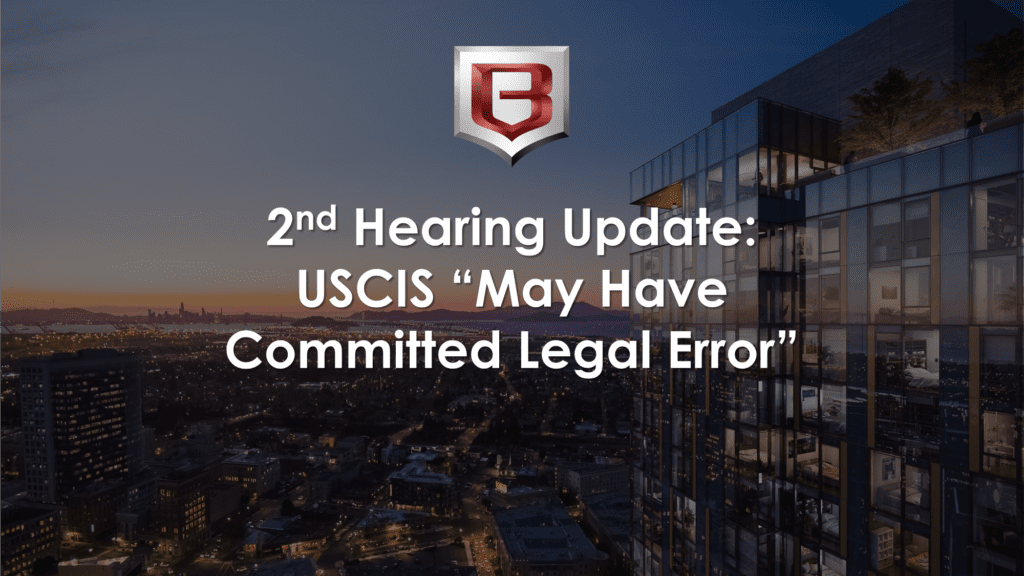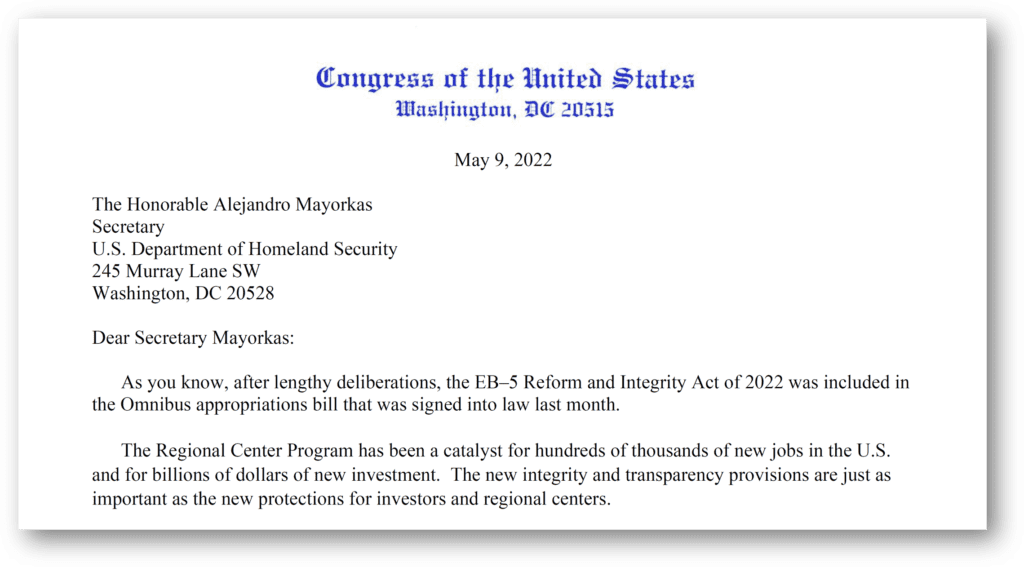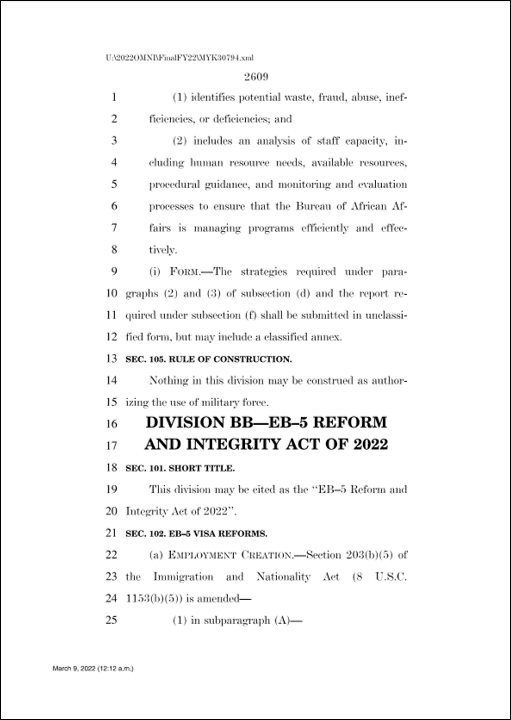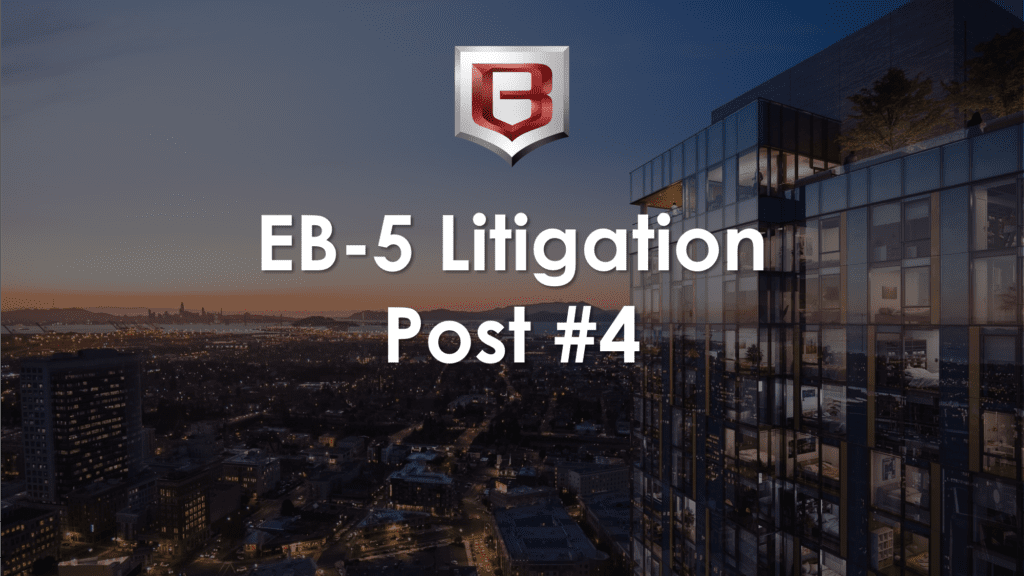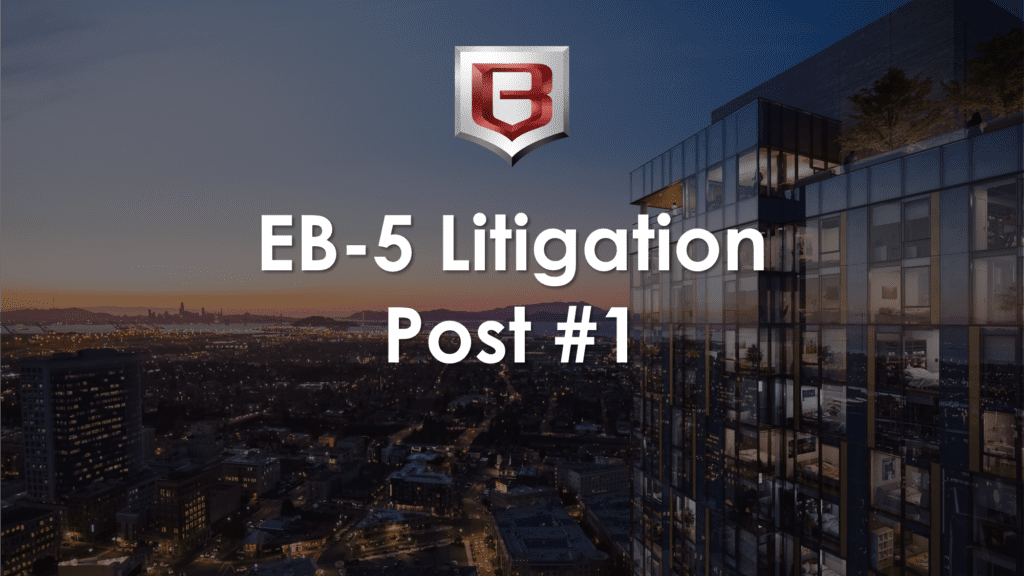Behring is in the news again for our latest efforts to improve the EB-5 industry in its EB-5 lawsuit against USCIS. This time is different though. We are not just innovating to offer better EB-5 investments, but to save the industry as a whole. After the new EB-5 rules started in November 2019, the industry saw a 99% collapse in new investor petitions, essentially killing the EB-5 Program. On December 21, 2020, Behring filed a complaint against DHS and USCIS and moved for an injunction to vacate these 2019 EB-5 regulations. If the EB-5 lawsuit is successful, the EB-5 Immigrant Investor Modernization Rule will be set aside, and the minimum investment amount will go back to $500,000, and the old methodology for TEA designation will be restored. In other words, the EB-5 industry will be back — creating US jobs and offering EB-5 investors the opportunity for a green card for them and their families.
An overview of Behring’s USCIS lawsuit can be viewed here: Summary
Behring is on the Verge of Winning the Lawsuit Against USCIS and the Court Strongly Considering Overturning 2019 EB-5 Regulations from the USCIS Lawsuit
On March 25, 2021, Behring had its first hearing in front of U.S. Magistrate Judge Jacqueline Scott Corley of the U.S. District Court for the Northern District of California. The court heard arguments from both sides. The arguments included:
- The EB-5 rule is invalid because the Acting Secretary of DHS and the Acting Chief of USCIS were unlawfully appointed without confirmation by the U.S.Senate.
- DHS actions were arbitrary and capricious because it failed to consider properly the economic impact of the new regulations, including the increase in the minimum investment amounts, new TEA definitions for high unemployment areas for urban metropolitan centers, and the process for certifying TEAs.
- The EB-5 rule has resulted in a 99.07% drop in new EB-5 filings, all but killing the program, because of the increased investment amounts and the uncertainty caused by USCIS’s lack of guidance on TEA designation and forcing prospective investors to wait years before receiving confirmation of TEA approval.
Although the court did not rule on the preliminary injunction, it converted Behring’s motion for a preliminary injunction into a motion for summary judgment on the limited issue of whether the Acting Secretary of DHS and the Acting Chief of USCIS were unlawfully appointed. This means because the issue involves only a question of law, no trial is necessary. The court asked the parties to brief further arguments about the “defacto officer doctrine” (i.e. the regulations should remain in place even if the officer responsible for implementation was not properly appointed). The court also requested the parties to brief the proper remedies should the court vacate the regulations. According to Greenberg Traurig, the attorneys for Behring, this is a strong indicator that Behring’s EB-5 lawsuit will succeed. A notion confirmed by the headlines of numerous news outlets reporting on the hearing immediately after it closed.
Next Steps in USCIS Lawsuit
The EB-5 lawsuit is still pending. Arguments must be submitted by April 22, 2021. The court may rule on the written briefs alone, but a final hearing is set for May 6, 2021.
If the EB-5 regulations are vacated, then the $500,000 minimum investment amount and former TEA designation process and definitions will likely be restored. There would be no likely effect on I-526 petitions filed after November 21, 2019 as the old rules would cover these new EB-5 petitions.
See Who Else Is Talking About Behring and the USCIS Lawsuit
IIUSA provides case update on Behring’s EB-5 lawsuit.
Greenberg Traurig, representing Behring in EB-5 lawsuit, states that the judge’s request to submit briefs on remedies if the regulations were invalidated is a strong indicator of the outcome.
Behring’s EB-5 lawsuit against USCIS is a “positive development for the industry” and can “provide more leverage and opportunity for a meaning legislative proposal that may benefit both investors and regional centers.”
Learn More About Behring EB-5
To learn more about the USCIS lawsuit or to see if Behring EB-5 is the right solution for you and your family, contact Behring for a free consultation.
- Learn how the new EB-5 regulations are unworkable by reading about the USCIS lawsuit.
- EB-5 lawsuit against USCIS has precedent for success.
- Behring’s Legacy Fund receives USCIS approval through our investor’s expedited request.
- EB-5 investors succeed in EB-5 lawsuit to get faster approval through mandamus cases.
- Biden announces immigration priorities giving hope for revitalized EB-5 Program.
If the EB-5 regulations are invalidated and the $500,000 investment amount is restored, it is likely only for a limited time. The sunset date for the EB-5 Regional Center Program is June 30, 2021. New legislation is expected to change the required investment amounts.


